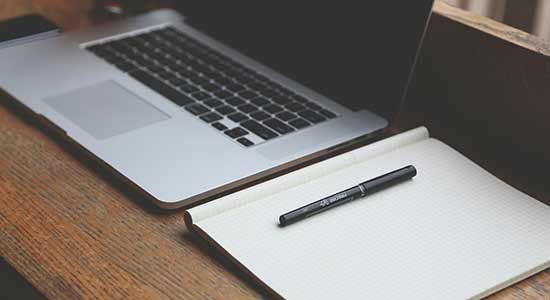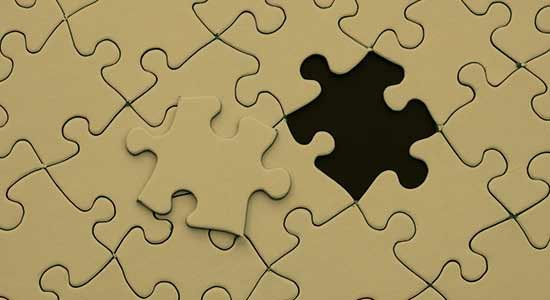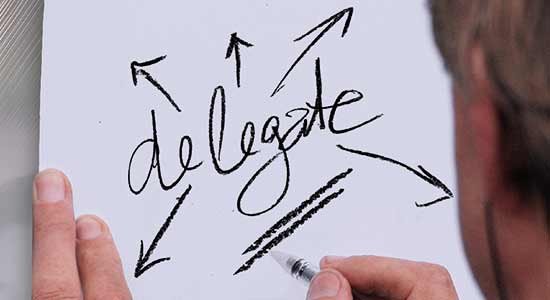I’ve been reading many articles about productivity lately, and I thought it would be interesting to share my thoughts on the subject.
It’s an essential part of our lives because we all want to do more in less time, right?
We all want to feel like we are making progress and accomplishing something. And while there is no one-size-fits-all solution for this, many things can help us get better at it.
These habits will help you to achieve maximum results with the least amount of work. Let’s dive right in!
Create an environment conducive to productivity by using music, lighting, and temperature.
Many of us work in less-than-perfect environments, whether in a crowded co-working space or our rooms. It might not always be easy to focus on what you are doing if the environment is not ideal.
This is why you need to create an environment that facilitates maximum productivity. I’ve found that listening to white noise while working helps me focus, but different things work for different people.

What is most important is creating an environment that works best for you. You can do this by using lighting that facilitates your ability to see objects correctly, a temperature that allows you to be comfortable while working, and music (or a lack thereof) to reduce distraction.
Music.
Music with no words is the best for productivity because it doesn’t distract us from whatever we do. Music with lyrics has been shown to reduce focus and productivity.
Lights.
The light is equally important because you need to see properly, so a good combination of lighting and temperature that works for you is vital. When your environment is dark, you make melatonin which makes you sleepy, so it might be harder for you to stay alert if your eyes are used to the darkness.
Temperature.
The ideal temperature range for maximum productivity is usually between 67 and 72 degrees. It has been found that the optimal temperature (and humidity) range was 68 to 72 degrees Fahrenheit, with a relative humidity of 50 percent.
Do your best to reduce distraction by using lightning or blinds if necessary, playing music without lyrics, and wearing clothes appropriate for the temperature you need to be comfortable in.
Drink a cup of coffee or tea before starting anything important.
As most of us know, caffeine is the world’s most widely consumed psychoactive drug. It has many effects on our body and mind, making it one of the most popular choices for people struggling to stay awake (e.g., college students pulling all-nighters).
It works because it stimulates the central nervous system and affects other body parts like your metabolism, liver function, digestion speed, blood pressure, muscle tension, etc. That doesn’t mean you should drink too much coffee (more than 4 cups a day) because excess caffeine intake can cause serious problems like insomnia or anxiety.
There are many studies done on how caffeine affects your productivity and attention span in different ways:
According to one study 1, 200 mg of caffeine, or 1 cup of coffee, is enough to improve your attention span for approximately 2 hours after ingestion. The same amount of caffeine has also made us more alert, focused, and able to remember things.
Another study 2 found that people who drank caffeinated beverages throughout the day increased their productivity compared to those who didn’t have caffeine!
Break your tasks into micro-tasks with specific deadlines for everything you want to accomplish in the day.
It is a fact that breaking down large tasks into smaller ones helps us stay interested and engaged in them. Also, set deadlines for your microtasks so you know when to expect each goal to be completed.
Studies have shown that when we give up on a task before its deadline, we think that the final goal is too difficult to reach. It has also been demonstrated that deadlines help us stay focused and feel less stressed while working on a task.

You can break a task into smaller parts and set a deadline for each. For example, if you are writing a paper, it’s usually best to write one section at a time.
Setting deadlines for your sections and keeping track of your time writing them with an online timer is also helpful.
When it comes to deadlines, it’s a good idea to set them at the beginning of the task because when we get closer to the deadline, we feel overwhelmed and stressed, making us less productive. On the other hand, having a deadline set makes us progress and feel more relaxed throughout the task.
A microtask can usually be completed in 5–10 minutes. Breaking your tasks into micro-tasks is especially useful if you work on a project with many different components. It will help you stay focused and make daily progress without feeling overwhelmed or discouraged.
Use the 80/20 rule.
Commit to just one productive 96-minute period per day (20% of your 8-hour workday) where you give your all. This will be the most valuable 96 minutes of your day because it’s a highly focused time when you are at your peak performance without distractions or burnout.
It’s called the 80/20 rule because it takes about 20% of the time to accomplish 80% of the work. The rest usually takes care of itself.
If you can find one important thing to focus on for 96 minutes per day, that would be your most valuable use of time.
People often get caught up in small tasks that add up to a few hours during the day but don’t accomplish anything meaningful.
Key Points:
- You could answer emails and phone calls, but most of them can wait for two hours while you focus on your one important task.
- Have one to two big goals for the day. If you only have small goals, they become distractions, and you won’t accomplish anything substantial.
- If you can’t find one big task, try combining all your small tasks into just one or two big things you can accomplish in that time. You need to be 100% productive during these 96 minutes, so don’t get distracted by checking your phone.
- The rest of your day can be used for meetings, administrative work, and processing information.
- There’s no such thing as a perfect productivity system since everyone is different and has unique needs. The key is experimenting with several techniques to find the right one that works for your lifestyle and goals.
This rule works best if you are self-employed or have flexible hours at work. If you are not, try blocking out these 96 minutes of work during the day.
Do complex tasks first thing in the morning.
Research shows that our energy levels are highest at around 10 a.m., so it’s vital to do your most challenging tasks at this time. Leaving them for later will waste valuable energy and time without achieving any near-term goals.

You should schedule all your most important work for the morning because if you start with something easy, you will procrastinate instead of doing something more difficult throughout the day when you have less energy.
While some people are more productive in the afternoon, most people benefit more from getting their difficult work done first thing in the morning.
If you start by doing easy tasks, they can become distractions that cause you to procrastinate on your important work. It’s also hard to focus on your big task after working on something less important for an hour or two.
Stop multitasking and take longer breaks between your tasks.
Although it’s good to set many tasks for your day, you should focus on completing one thing simultaneously because multitasking decreases productivity and makes each task less efficient.
Studies show that when people do two things at once instead of finishing something before moving on to the next task, they do all tasks worse. The reason is that switching from one thing to another interrupt your workflow and takes more time than if you were just focused on one thing.
Just because you aren’t spending eight hours in front of your computer doesn’t mean multitasking won’t hurt your performance.
Even if you mix work with other activities, like driving or walking, you are less focused on your actions because your mind is elsewhere.
The more you multitask, the more likely it is that distractions will interrupt your work, waste your time, and eventually divert you. If issues arise during your day, don’t let them distract you from your main goal. This means ignoring phone calls or emails unless they are important enough to require an immediate answer.
The best way to keep maximum focus is to get into a flow and not switch between tasks too much. Our brain can handle an average of 1-2 hours of hard mental work before needing a 15-minute break.
You may think that taking five-minute breaks every 20 minutes helps maintain your focus better than taking one longer break after one or two hours, but it doesn’t. Those 5-minute breaks can not only harm your focus but also make you even more tired than if you had taken a longer 10- or 15-minute break after a couple of hours of work.
Use the two-minute rule.
If something takes less than 2 minutes, then do it right away.
This rule helps you avoid procrastinating on tasks that take less than two minutes to complete.

For example, if you are reading your emails and the first one isn’t necessary, delete it immediately. If you need to answer a coworker’s question, do it immediately. If you have a phone call to make, make it right away. If it takes less than two minutes to complete a task, do it immediately to avoid procrastinating.
If the task at hand will take more than 2 minutes, you can break the job into smaller tasks that take less than 2 minutes each to complete.
For example, if you have a paper, you need to write, break the task up into research, write an outline, and write the final draft. Or let’s say your boss asks for a presentation on your department’s recent growth. You can break that up into gathering data, creating graphs and charts, writing an outline, and making the final presentation.
When you use the two-minute rule, you break out of your pattern of delaying by taking care of the task at hand—even if it’s just a tiny one. The two-minute rule allows you to start working immediately and feel productive by crossing something off your list: a step in a process, a task you need to accomplish, or something on your work to-do list.
Use automation software to reduce repetitive tasks.
You can save a lot of time and energy by automating your everyday tasks on a regular basis.
Automation software lets you set up automatic check-ins on social media, send emails and newsletters, plan posts for your blog or website, and make reports that run regularly.
If you have repetitive tasks you do daily, automate them or set up rules for them to happen without thinking about it. Depending on your job, these minor tasks can add up to several hours of productivity. Try to find ways to automate tasks so you can focus on higher-level responsibilities.
One way to determine if you need to automate a task is to track how you spend your time for a week. Then, look at the tasks that take up most of your time and consider whether you can automate them.
Automation tools.
For example, if answering emails takes up more than 1 hour each day, then it’s worth looking into some email automation software to see if it helps reduce the amount of time you spend on email.
For example, you can filter out your emails, and only see emails from a specific sender once. Or you can create a filter that sends all newsletters to the “junk” folder, so they don’t clog your inbox.
Another example is if you use Microsoft Office, you can easily automate tasks by creating formulas and functions to save time. For example, you can create a formula for your expenses spreadsheet to automatically calculate the total of several rows without manually entering numbers from each row into the total row.
There are tools like Zapier that can help you with automation. They let you connect different apps you use to create a workflow for a specific task. For example, with Zapier, you can set up a “Zap” that automatically creates a task in Asana whenever you receive an email.
If your job requires long hours of detailed work, finding ways to automate those complex tasks may be worth it instead of just trying to work faster.
With so many tools available now, it’s easier than ever to automate some of the work that needs to be done. Try searching Google or Pinterest for “apps that help XYZ” or “tools that can help do XYZ.” You might find a tool you didn’t know existed before.
Delegate tasks to other people.
Depending on your position or the nature of your job, you may delegate tasks to others. For example, many managers can delegate work that doesn’t require creativity or strategy. They can also give high-level assignments and work that requires judgment and reasoning skills to employees with more experience in those areas.
If you can, try delegating tasks or getting help from other people. For example, if you have a large project that you’re working on, it can be helpful to delegate smaller sub-parts of the project to others. For example, you can assign different sections of your report to other people who are good at researching in their areas. You might even be able to outsource some parts of the project, like getting high-quality graphics created for the report.

If you are a freelancer or work for yourself, consider hiring someone to do your busy work.
For example, you can hire writers to write blog posts or content for your website if you don’t have the time or skills. You might also be able to hire people on Fiverr or Upwork to help with simple tasks like data entry, editing photos, creating graphics, and more.
You can also hire virtual assistants to do simple tasks for you. For example, many services will let you hire someone to answer calls or reply to emails. This can be much cheaper than hiring someone full-time and having them do the occasional task when needed.
Delegating tasks allows others to learn new skills while freeing up your time to do tasks where your contribution will have more impact. Plus, when work gets done faster and more efficiently, it can be easier to justify allowing someone else to take on more tasks.
Use mind-mapping tools for brainstorming and writing.
Brainstorming is an integral part of creativity, which means it’s also essential for productivity since you’re more likely to get ideas when you clear your mind and put pen to paper (or fingers to the keyboard). Software tools for mind mapping include XMind, eDraw, and MindManager.
If you’re a visual learner, mind mapping can be beneficial for brainstorming ideas since it allows you to arrange information to make it easier for you to understand. This is why people use mind maps for study notes: they can help students organize a lot of information in a simple and easy-to-understand format. It’s also why many business professionals use mind-mapping tools when developing company strategies or planning significant projects.
If you want to start mind mapping, here are some tips:
Create a central idea for your map. Once you’ve created the main topic, add subtopics beneath it that branch out into their thoughts. Keep adding more subtopics until you have several ideas to expand on later. If possible, try working on one map at a time rather than several at once.
More extensive projects or tasks may require multiple mindmaps, but keep it simple by focusing on one task at a time. While there are many ways to organize information in a mindmap, including chronological order, hierarchical order (using different colors), and spatial order – organizational structure isn’t important when brainstorming since it’s best to focus on getting your ideas down and sorting them out later.
Conclusion.
I could mention many other tips, but these are my favorites.
The best way to try them out is to experiment with what works for you and what doesn’t. Do something different today than yesterday, measure your results, and note how things change.
We all have good days where we become Energizer bunnies in terms of productivity. Then there are bad days… we can identify patterns by paying attention to our moods, noticing where our energy levels spike, etc., so make sure to do this!
We hope this list has given you some new ideas for increasing productivity at work or home. Comment below and tell us which tip has helped you most!

Matthew Mansour is a professional life coach, fitness trainer, health coach, a blogger with over 800 articles published to date. He enjoys reading and researching books that are reflective of the nature of who we are as humans, understanding the complexity of our minds, and using it as an advantage to propel us forward in life.
He is a self-help enthusiast and he is not ashamed about it! He’s always looking for his next fix of inspiration, motivation, insight, and wisdom from those who have been there before him!
He also does a lot of courses and research on the latest and greatest in the area of self-help, life coaching, and health.
He likes to share his discoveries with anyone who is interested in listening! His personal goal is to help people achieve great results in their lives, that is why he also has a blog about self-improvement.
He loves animals and he currently lives in New Jersey with his loving wife and his recently born child.